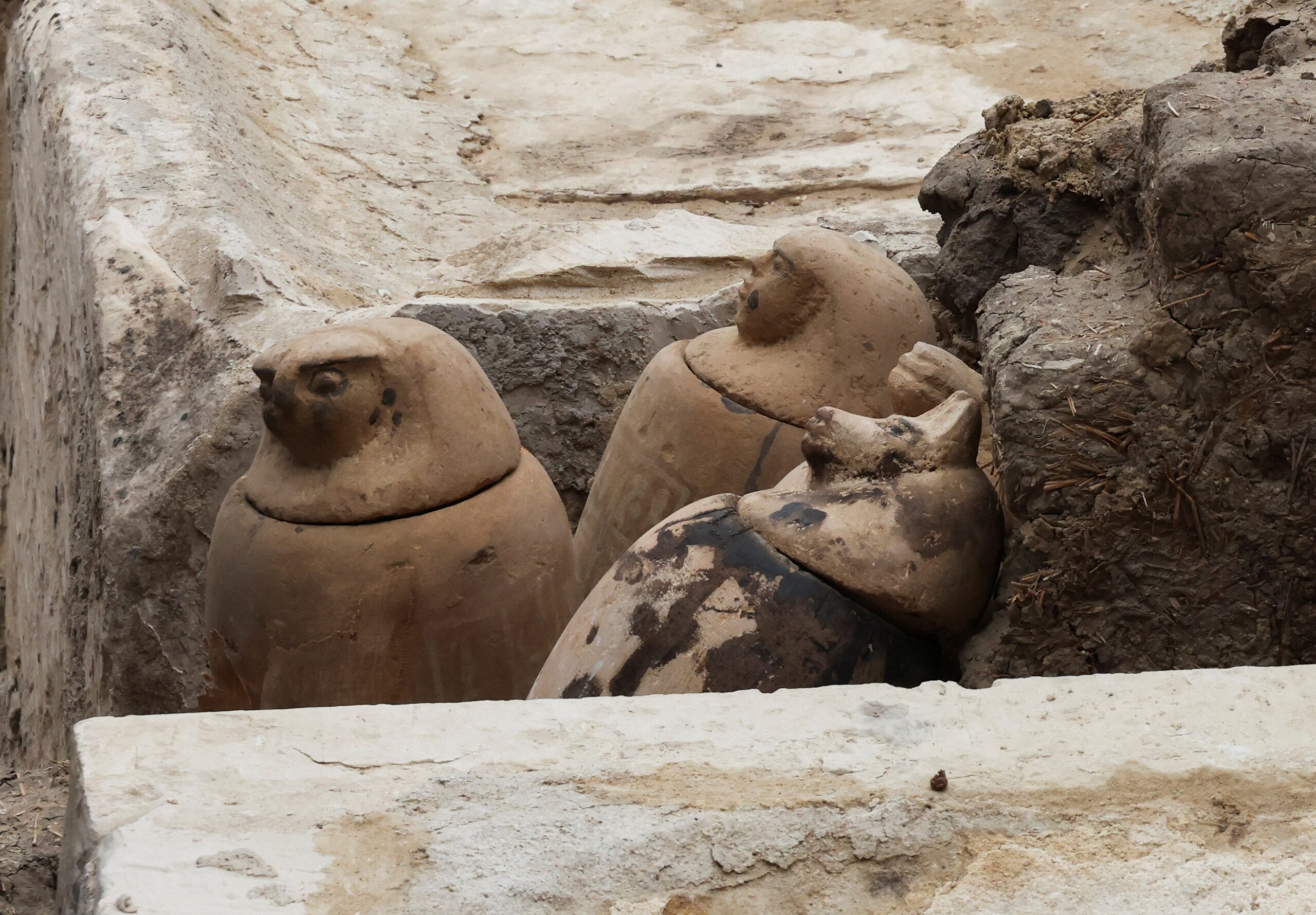SUMMARY
This is AI generated summarization, which may have errors. For context, always refer to the full article.

SAQQARA, Egypt – Egypt unearthed human and animal mummification workshops as well as two tombs in the ancient burial ground of Saqqara, officials said on Saturday, May 27, marking the latest in a string of discoveries that the country hopes can help revive its vital tourism industry.
Mostafa Waziri, the head of Egypt’s Supreme Council of Antiquities, told reporters that the two large “embalming workshops” date back to the 30th dynasty (380-343 BC) and the Ptolemaic (305-30 BC) eras.
The discovery was made after a year-long excavation near the sanctuary of the goddess Bastet, which is home to the catacombs of mummified cats in Saqqara, some 30 kilometers (18.6 miles) south of Cairo.
It was the same spot where hundreds of mummified animals and statues were uncovered in 2019.
“We found embalming workshops, one for humans and one for animals. We found all the tools that they used (in mummification) in ancient times,” Waziri said.
Both workshops featured stone beds, clay pots, ritual vessels, natron salt, which is one of the main ingredients for mummification, and linens among other mummification instruments.
The Saqqara excavations also led to the unearthing of two small 4,400 and 3,400-year-old tombs nearby, belonging to two priests, Ne Hesut Ba of the Old Kingdom’s fifth dynasty and Men Kheber of the late kingdom’s 18th dynasty respectively.
Inscriptions of cultivation, hunting and other daily activities were found on the walls of Ne Hesut Ba’s tomb while “scenes showing the deceased in different positions” were engraved in Men Kheber’s tomb, officials said.
Egypt has carried out extensive digging operations in Saqqara and other ancient locations in recent years, which resulted in a number of high-profile discoveries.
The country plans to inaugurate the Grand Egyptian Museum, a state-of-the-art facility near the Giza Pyramids on the outskirts of Cairo, after construction is completed later this year.
Egypt hopes it can further lure back tourists after the industry started to rebound of late, having been battered by the aftermath of the COVID-19 pandemic and the conflict in Ukraine.
Tourism revenues climbed to $7.3 billion in the second half of 2022, a 25.7% increase compared with the same period a year earlier, according to recently released central bank data. – Rappler.com
Add a comment
How does this make you feel?

There are no comments yet. Add your comment to start the conversation.